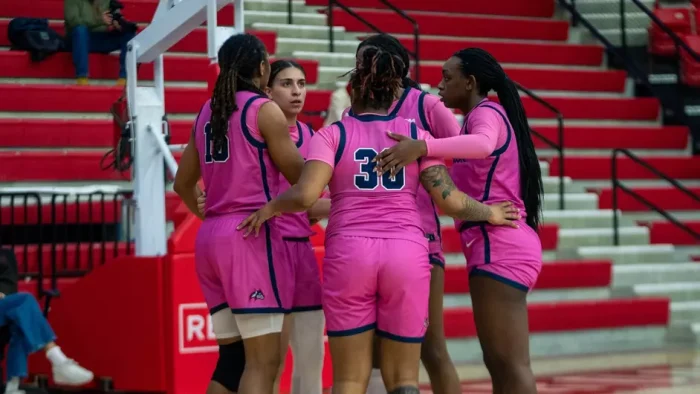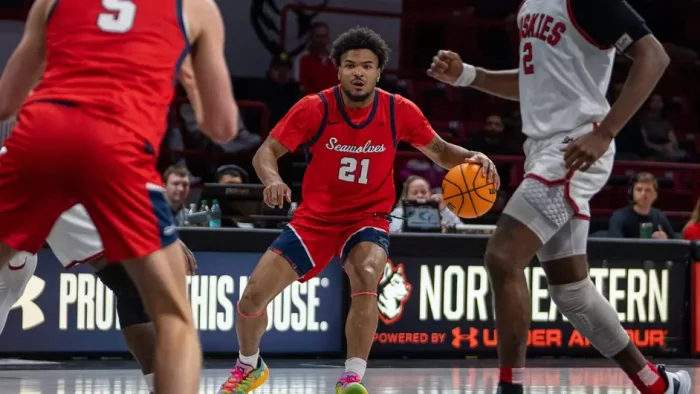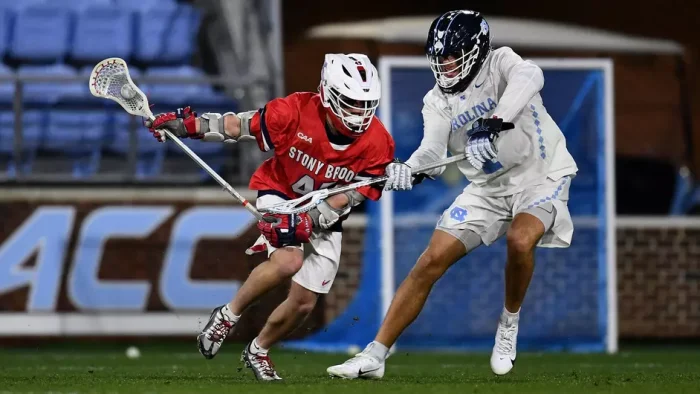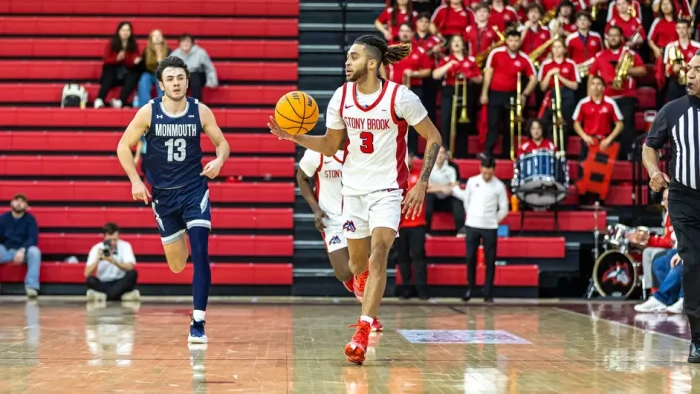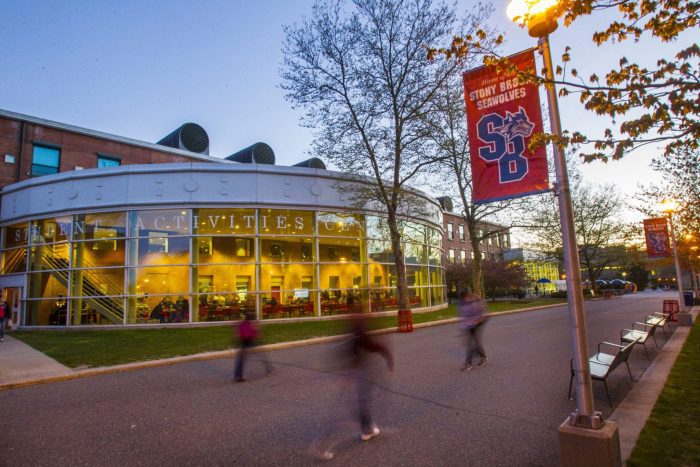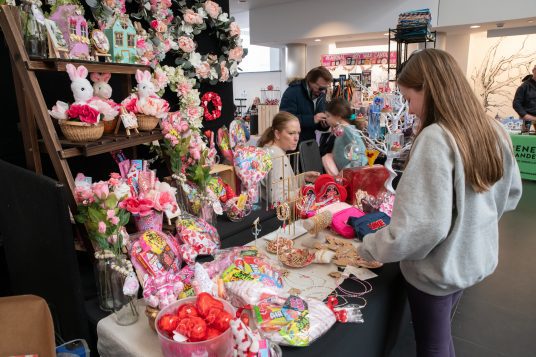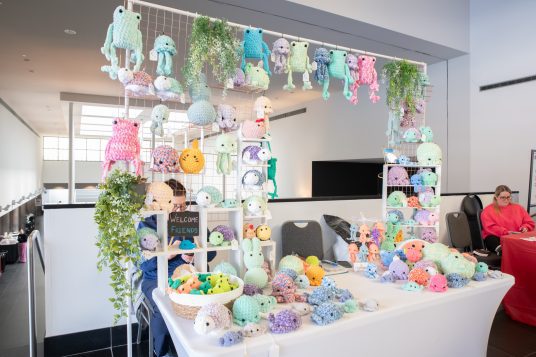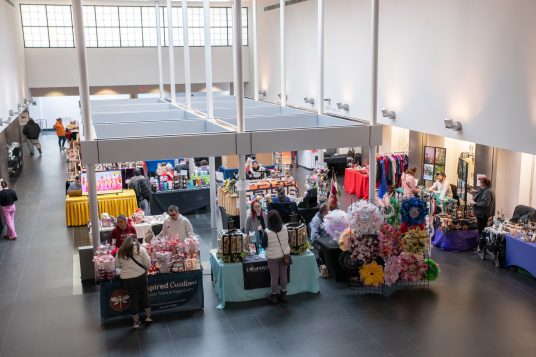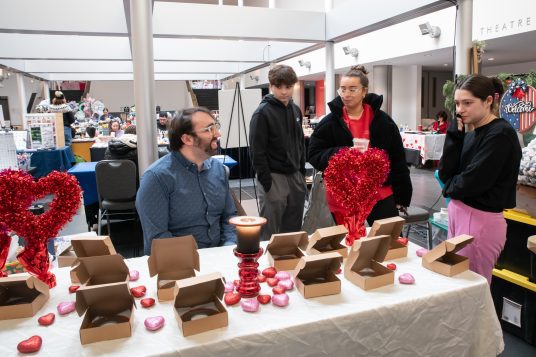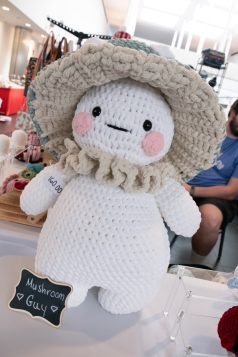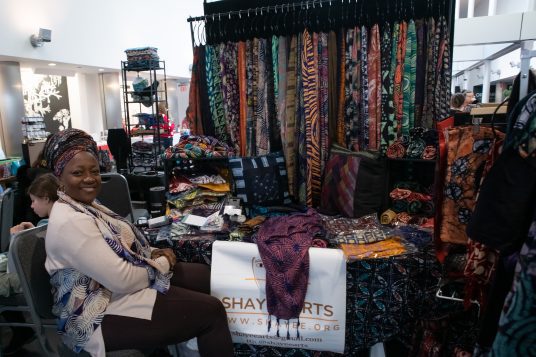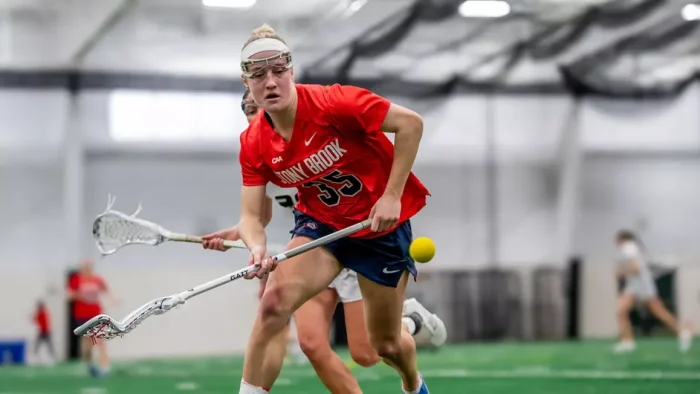Stony Brook women’s basketball battled with Hampton, ultimately falling 59-57, on Feb. 14 at Stony Brook Arena. Shamarla King, Zaida Gonzalez and Breauna Ware combined to score 46 of the Seawolves’ 57 total points.
The Seawolves (11-12, 6-6) had three players score in double figures, led by King, who had 19 points and six rebounds. Gonzalez tacked on a double-double with 15 points and 10 rebounds and Ware chipped in with 12 points, three rebounds, two steals, and one assist.
The Seawolves out-rebounded the Pirates 41-37, paced by Gonzalez’s 10 boards. Stony Brook’s defense held Hampton to only 40 percent shooting from the field, including 27.8 percent from beyond the arc. The Pirates did not have much luck cleaning up their misses on the offensive glass either, as they finished with nine offensive rebounds and managed eight second chance points while Stony Brook cleared 32 defensive rebounds.
HOW IT HAPPENED
After jumping out to a 7-6 advantage, Stony Brook went on a 5-0 run with 6:27 left in the first quarter, culminating in a three from Gonzalez, to increase its lead to 12-6. The Seawolves then lost some of that lead but still entered the quarter break with an 18-13 advantage. Stony Brook relied on its three-point shooting in the period, knocking down four treys with a pair from Gonzalez and King.
The Seawolves could not maintain their lead in the second quarter, only shooting 2-11 from the field as the Pirates entered halftime on top, 26-25.
Stony Brook’s deficit continued to grow after halftime as Hampton continued to outscore the Seawolves. Lauren Filien, Dallysshya Moreno, and Elizabeth Field helped in the offensive output while the squad dominated on the boards with 13 rebounds.
Stony Brook narrowed its deficit in the fourth quarter, as Ware and King both scored seven points. The Seawolves trailed by only four heading into the final frame and got within one with 25 seconds left to play.
Up next, the team has a quick turnaround in traveling to Maryland to take on Towson on Feb. 16. Tip-off is scheduled for 2 p.m. in the Seawolves and Tigers sixth meeting all-time. Coverage is available on FloCollege.

